Small homes in the Philippines
How tiny and homey is a small house in the Philippines?
If we go by lot cuts offered in thousands of cookie-cutter, developer-initiated or government programs, the socialized/economic lot sizes are between 70-150 sqm. Do their existing model units support incremental expansion by the homeowner logically? Do they encourage enough open space for users to enjoy the postage-stamp sized home? With our ever-changing climate realities now, do stock housing models being offered in the market even consider the sun, wind, environmental conditions and other site factors?
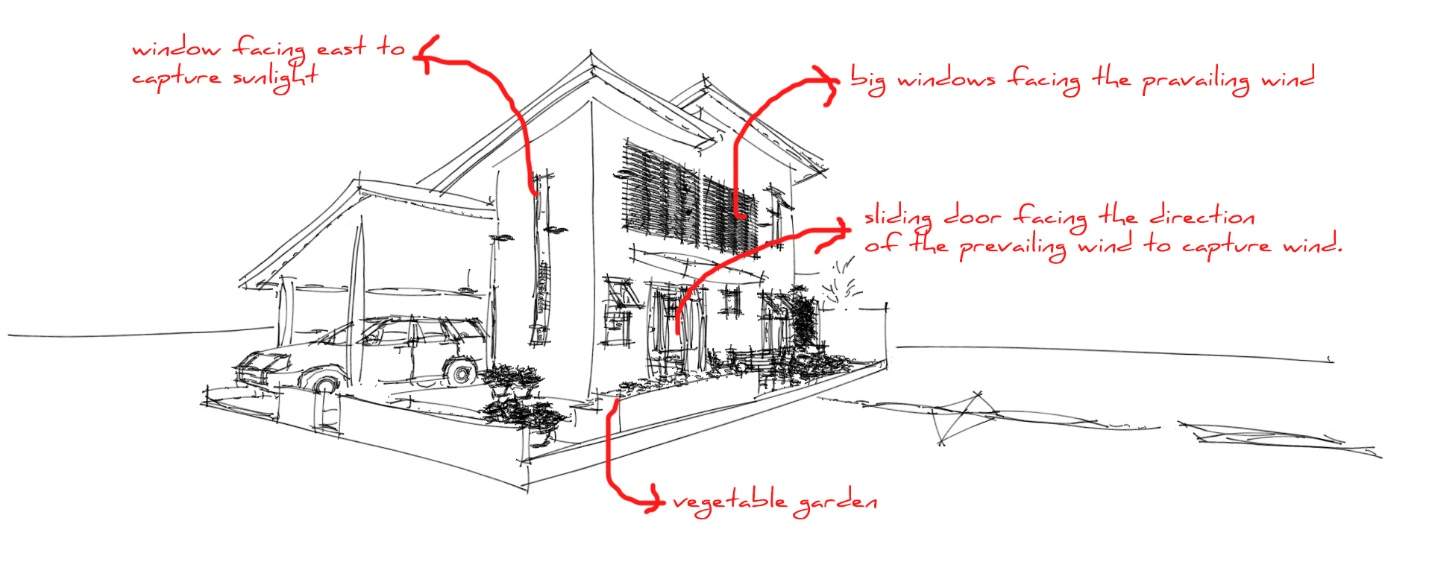
at East and West sides for minimum direct sun exposure
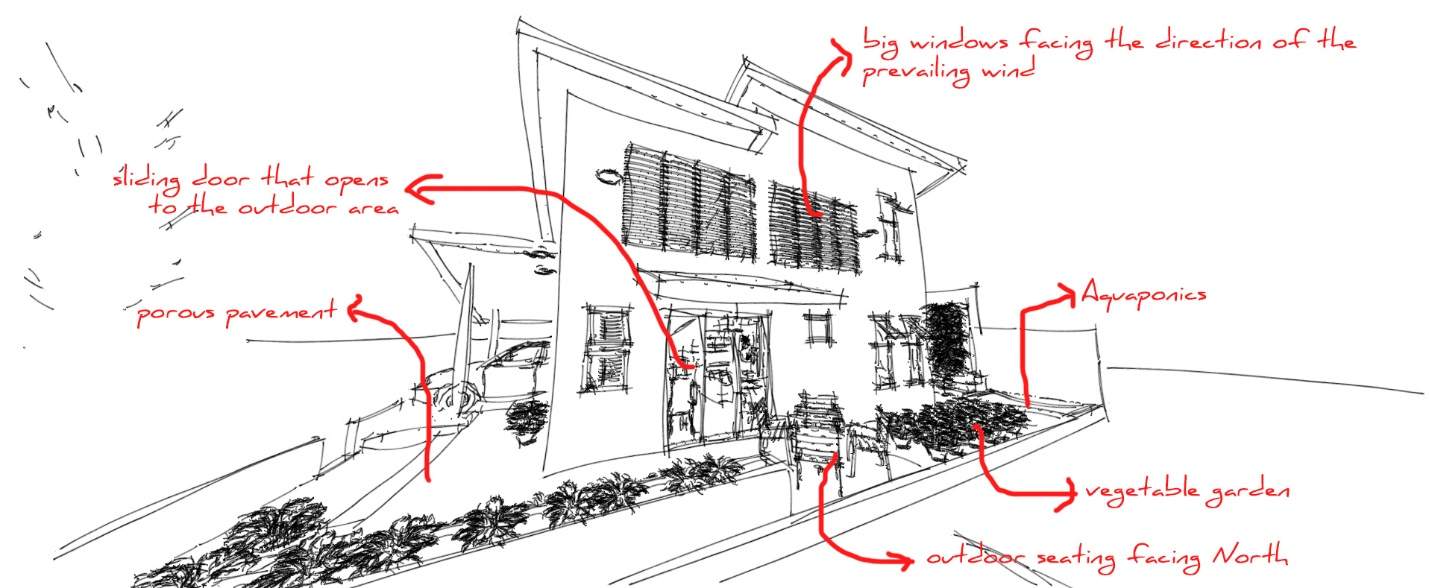
to face prevailing winds and North orientation
Some ideas that plenty of designers would like to advocate even for
the most modest of homes, include passive climatic design, independent
rainwater collectors, food production and more smart planning and
techniques. But how practical are these in the face of tiny budgets and
neutral contractors?
We have a series of sketches just to show how some subtle feature can help you plan a house smartly. These can be applied whether your building a huge or compact residence. Just a little more effort to discuss with your designers to go beyond the cosmetic look of your houses will go a long, long way. Your house should first and foremost function as a solid shelter for your family, without a lot of mechanical maintenance and backjob repairs. It should also support your lifestyle and well-being in an efficient and sustainable manner. AEX has an article here in our Writings, on how sustainability can be realized within your homes.
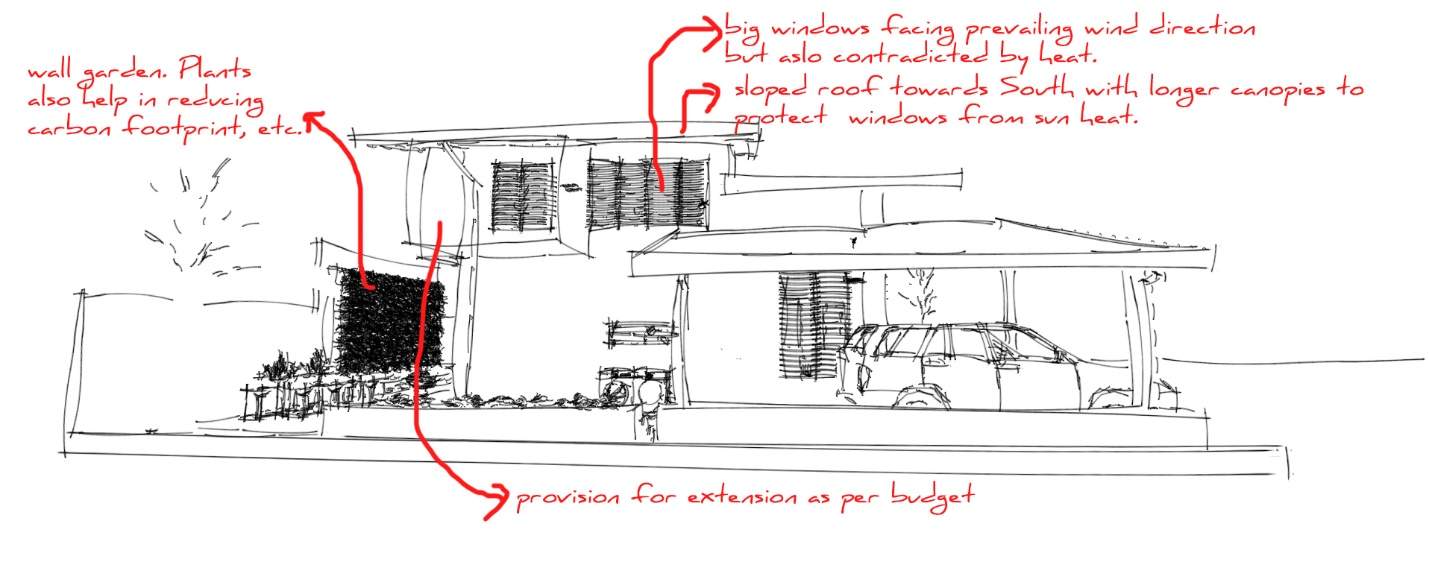
at South and West sides to minimize heat gain
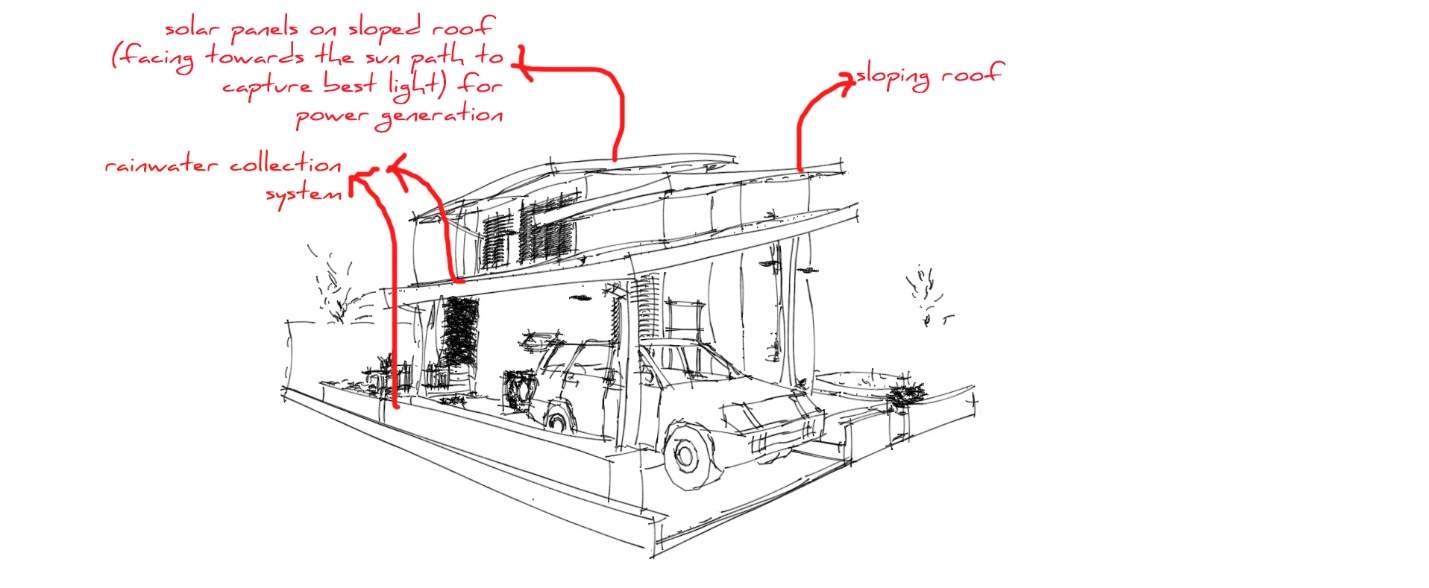
angled roof towards rainwater catchment tanks for storage and reuse
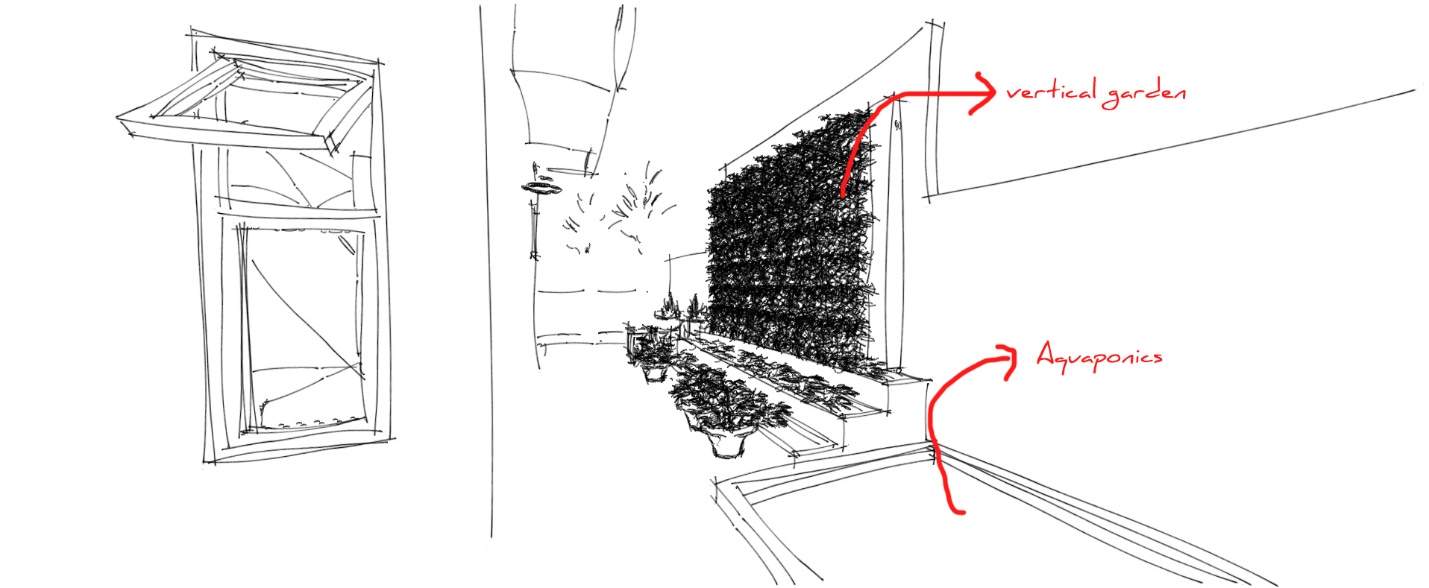
closed-loop systems like Aquaponics can be both functional and decorative
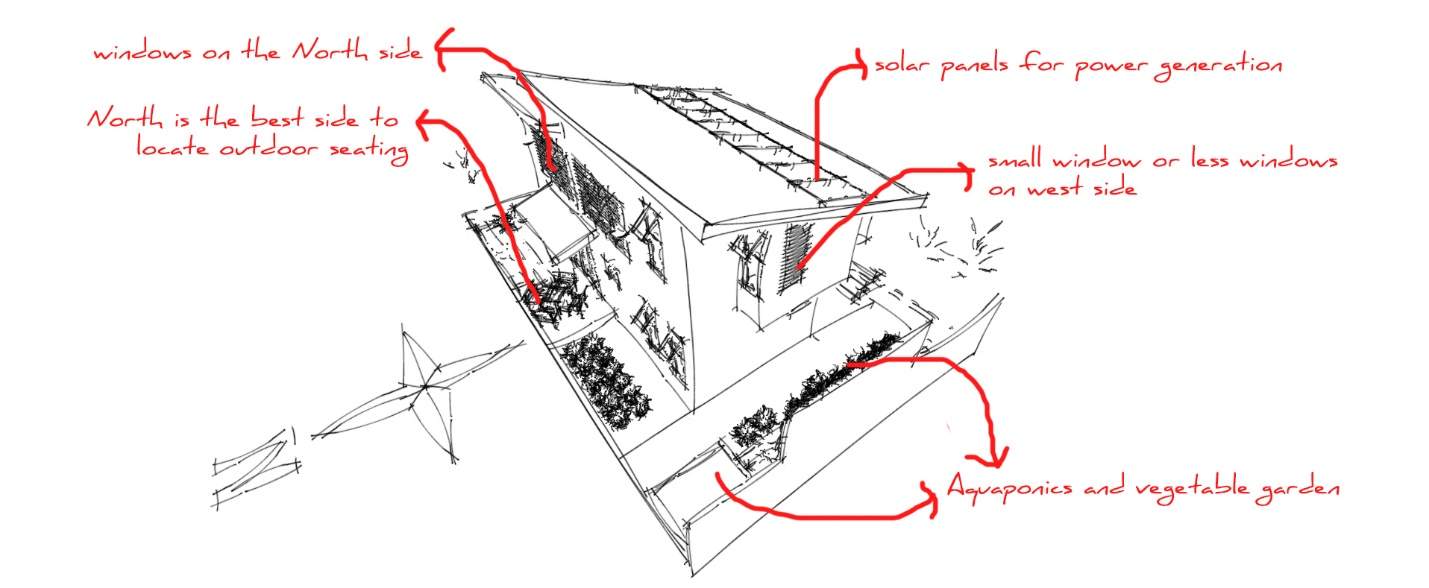
to optimize site opportunities and recognize issues
Inside the house
The art of making tiny spaces feel spacious by thinking things through.
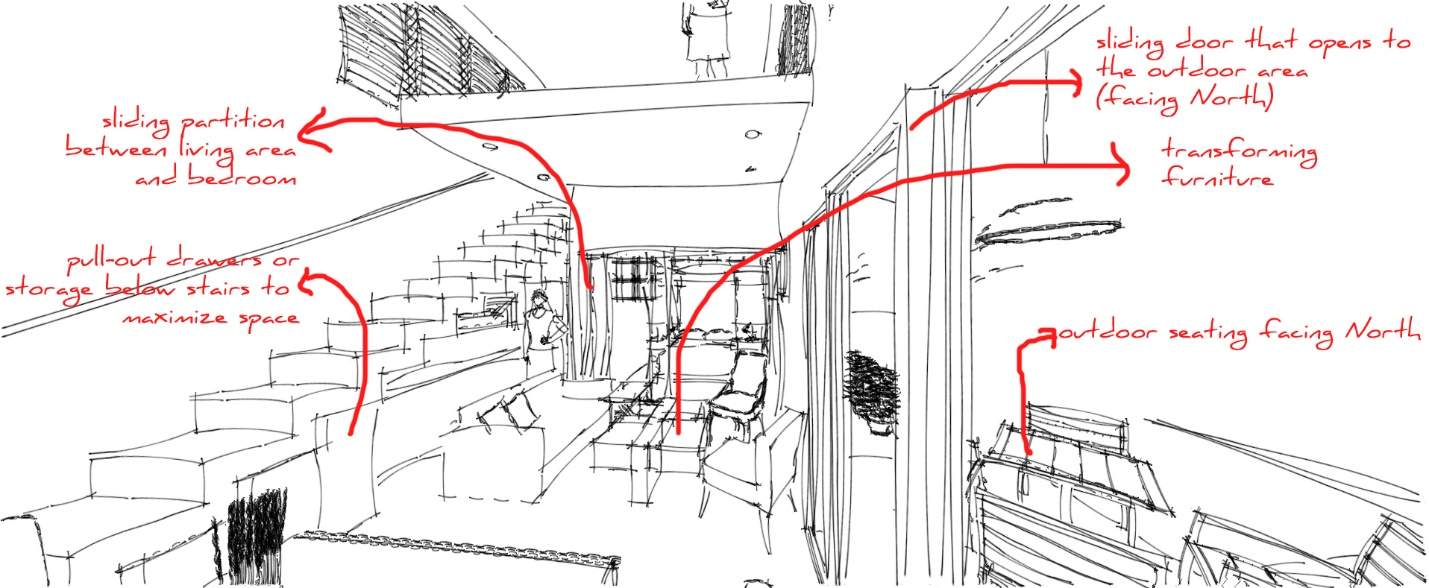
open, transformable living spaces

multi-use furniture and clever storage
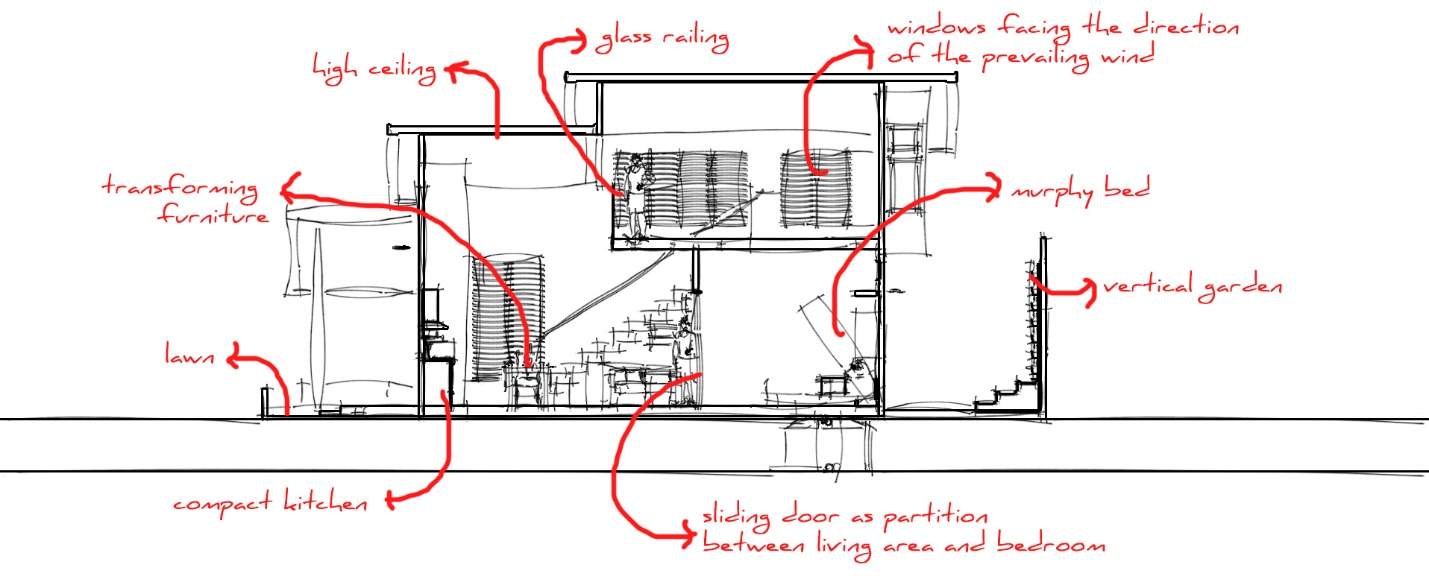
lets hot air escape at the top and cross ventilate the spaces passively